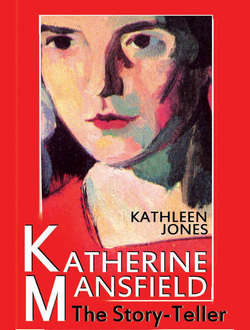
The compelling, intimate, and often controversial, story of Katherine Mansfield -- one of the world's greatest short story writers – the only writer Virginia Woolf confessed to being afraid of. Kathleen Jones has been the beneficiary of a mass of previously unavailable material relating to Mansfield and her husband John Middleton Murry. Weaving together intimate details from Katherine Mansfield's letters and journals with the writings of her friends and acquaintances, Jones vividly evokes the tragic, but courageous, drama of this fragile yet feisty author: her life, loves and her passion for writing. The biography takes us beyond Mansfield's death in 1923 to explore the life of her husband, John Middleton Murry -- and his relationship with three further wives -- as he manipulated the posthumous publication of Mansfield's unpublished work. In this vivid portrayal of one of the world's foremost short story writers, the first new biography for a quarter of a century, Kathleen Jones crafts an intriguing narrative of Katherine Mansfield's relationships, health issues and creativity.
‘I read it with huge enjoyment - I think it’s by far the best Katherine Mansfield biography yet'
JACQUELINE WILSON, novelist, patron of the Katherine Mansfield Society.
‘I read it with huge enjoyment - I think it’s by far the best Katherine Mansfield biography yet'
JACQUELINE WILSON, novelist, patron of the Katherine Mansfield Society.
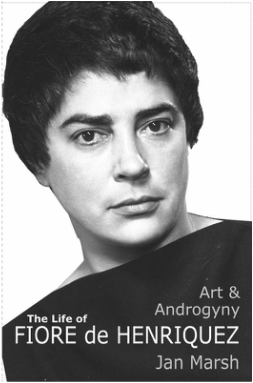
The sculptor Fiore De Henriquez led a double life in more sense than one. Born in Italy, she became a British citizen with an international career and, until her death in June 2004, divided her time between London and the Italian province of Lucca. Born and raised as a girl she developed male characteristics at puberty, at which time she accepted a unique intersexual identity that she celebrated as hermaphrodite.
Her sculpture reflects this duality. Her work encompasses two main fields - that of expressive portraiture, combining masculine strength with feminine sensitivity, and that of semi-abstract figures featuring twinned bodies, ambiguous creatures and legendary beings that inhabit more than one realm. At once highly public - Fiore's sitters included HRH Queen Elizabeth, the Queen Mother, President Kennedy, Margot Fonteyn, Igor Stravinsky, Vivien Leigh - her emotional life was difficult, tumultuous and at times explosive, for her passion and rages were as powerful as her personality.
Jan Marsh has written biographies of Edward Thomas, Elizabeth Siddal, Christina Rossetti and Dante Gabriel Rossetti. She is, perhaps, best known for a definitive work, The Pre-Raphaelite Sisterhood, which established her now international reputation as an authority on Victorian art.
Her sculpture reflects this duality. Her work encompasses two main fields - that of expressive portraiture, combining masculine strength with feminine sensitivity, and that of semi-abstract figures featuring twinned bodies, ambiguous creatures and legendary beings that inhabit more than one realm. At once highly public - Fiore's sitters included HRH Queen Elizabeth, the Queen Mother, President Kennedy, Margot Fonteyn, Igor Stravinsky, Vivien Leigh - her emotional life was difficult, tumultuous and at times explosive, for her passion and rages were as powerful as her personality.
Jan Marsh has written biographies of Edward Thomas, Elizabeth Siddal, Christina Rossetti and Dante Gabriel Rossetti. She is, perhaps, best known for a definitive work, The Pre-Raphaelite Sisterhood, which established her now international reputation as an authority on Victorian art.
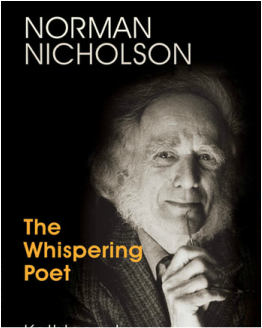
Norman Nicholson has been described as the greatest Lake District poet since Wordsworth. In his twenties he was a protege of T.S. Eliot and won major awards alongside Ted Hughes and Seamus Heaney, who referred to him as 'a fathering voice'.
He was born in the small industrial town of Millom and lived there, in the house where he was born, until he died. Norman's formal education was interrupted by tuberculosis at the age of 16 and he spent almost two years in a sanatorium before returning home, where he lived as an invalid in an attic room at the top of the house, reading, studying and writing.
Preoccupations with his health and dependence on his parents made it difficult for him to form relationships with women. Norman was engaged to Enrica Garnier for more than ten years. A relationship with Kathleen Raine produced some of his most lyrical poetry. He was over forty when he met English teacher Yvonne Gardner and their marriage gave him security and happiness.
Norman produced seven collections of poetry, a mass of literary journalism, biography, fiction and criticism as well as best-selling books on the landscape of the Lake District. He was an evangelist for provincialism, defending his life-choices against growing metro-centrism. Isolated and eccentric, he had bitter exchanges with Philip Larkin and George Barker. 'Green before the word was coined' he was a fervent environmentalist, not afraid to speak out against the dangers of nuclear power and environmental destruction, and his work has great contemporary relevance.
A unique, gentle spirit with a quirky sense of humour, Norman Nicholson's writings are among the literary treasures of the Lake District.
He was born in the small industrial town of Millom and lived there, in the house where he was born, until he died. Norman's formal education was interrupted by tuberculosis at the age of 16 and he spent almost two years in a sanatorium before returning home, where he lived as an invalid in an attic room at the top of the house, reading, studying and writing.
Preoccupations with his health and dependence on his parents made it difficult for him to form relationships with women. Norman was engaged to Enrica Garnier for more than ten years. A relationship with Kathleen Raine produced some of his most lyrical poetry. He was over forty when he met English teacher Yvonne Gardner and their marriage gave him security and happiness.
Norman produced seven collections of poetry, a mass of literary journalism, biography, fiction and criticism as well as best-selling books on the landscape of the Lake District. He was an evangelist for provincialism, defending his life-choices against growing metro-centrism. Isolated and eccentric, he had bitter exchanges with Philip Larkin and George Barker. 'Green before the word was coined' he was a fervent environmentalist, not afraid to speak out against the dangers of nuclear power and environmental destruction, and his work has great contemporary relevance.
A unique, gentle spirit with a quirky sense of humour, Norman Nicholson's writings are among the literary treasures of the Lake District.

Margaret Forster is one of the UK's most prolific and respected authors. Born in Cumbria to working class parents in 1938, she wrote her first novel at the age of twenty two. Since then she has published 24 novels (and has another on the way), as well as 9 non-fiction titles - a mixture of award-winning biography and memoir. Her books are all very different - there has never been a formula to attract readers - and perhaps this is the secret of her success.
Kathleen Jones, a biographer, poet and fellow Cumbrian, explores Margaret's books against the background of her life; a life divided between the quiet hills of the Lake District and the busy capital city London; between the demands of a lively family, and her own writing career.
Kathleen Jones, a biographer, poet and fellow Cumbrian, explores Margaret's books against the background of her life; a life divided between the quiet hills of the Lake District and the busy capital city London; between the demands of a lively family, and her own writing career.
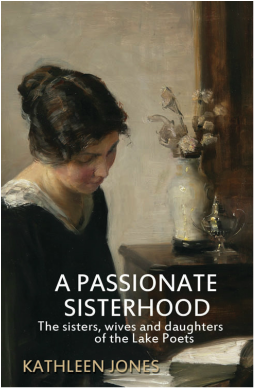
The relationships of the Lake Poets have become a romantic literary myth. The Wordsworths lived at Grasmere, the Coleridges and Southeys twelve miles away at Keswick. The letters and journals of their sisters, wives and daughters form the basis for this illuminating new account of their interconnected lives - their passionate attachments, petty jealousies, the deaths of children, the realities of chronic ill health and barbaric medical practice. They also contribute to a fuller understanding of Wordsworth, Coleridge and Southey as all too fallible human beings.
"It is the stuff your English teacher never told you . . . told with such enthralling vividness."
VAL HENNESSY, Daily Mail
"It is the stuff your English teacher never told you . . . told with such enthralling vividness."
VAL HENNESSY, Daily Mail
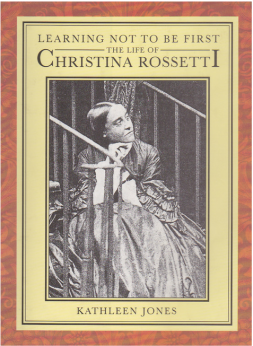
This new biography is a fresh and illuminating study of Christina Rossetti and her poetry. Kathleen Jones looks at her life alongside that of other nineteenth-century women writers - notably Emily Bronte, Elizabeth Barrett Browning and Emily Dickinson. Christina was the youngest of the four Rossetti children, born in England to Italian parents. Although she and her brother, the artist Dante Gabriel, were known as the 'two storms', Christina's passionate nature was curbed in a way that her brother's was not, as she submitted to the social and religious pressures that lay so heavily on Victorian women. Like Elizabeth Barrett Browning, she suffered the tyranny of a loving family. Her sister Maria's influence was described as 'a species of police surveillance', and Christina was always careful never to write anything that would hurt her mother. Often referred to as the 'High Priestess of Pre-Raphaelitism' Christina had a genuine lyric gift that could articulate both the joy of being alive and the bitterness of loss. The loneliness of the unloved was her particular province. As her personal life became increasingly tragic, her output of religious poetry grew. Her desire for poetic excellence and moral excellence were continually in conflict and her poetry betrays the corrosive effect of this struggle. Christina's deliberate self-effacement, Dante Gabriel's portrayal of her as the meek virgin and William Rossetti's role as editor and interpreter of her work have gradually blotted out the passionate lively spirit who wrote with such simplicity and power. Learning Not To Be First strips away the suffocating shadows of Christina Rossetti's life to reveal her true self.
"Best book of 1991"
DORIS LESSING The Independent
"Best book of 1991"
DORIS LESSING The Independent
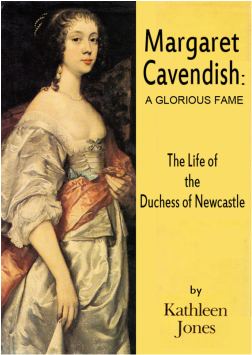
Margaret Cavendish was the first English woman to write specifically for publication and to consider herself primarily a writer. She cloaked her crippling shyness in extravagant dress and an exotic public persona. A feminist long before her time, she believed in sexual equality, criticised the role that society assigned to women and even questioned the institution of marriage. Although she, like virtually all women of her time, had little formal education, she wrote, with atrocious spelling, stories, poems, essays, 'fancies' and scientific and philosophical treatises. So controversial was her reputation that when she visited London, crowds lined the streets to watch her pass. She was a solitary, gifted and outlandish figure.
Margaret lived at one of the most exciting and turbulent times in British history. She was only a young girl when civil war broke out in England. Her family were Royalist supporters who lost everything - their house was pulled down by an armed mob and the family graves looted. Margaret's mother was imprisoned and later died. Two of Margaret's brothers died in battle. She herself became a fugitive, following the Queen into exile in Paris as one of her 'waiting women'. Though Margaret was only the daughter of a gentleman, she caught the eye of William Cavendish, Duke of Newcastle and - fearing the Queen's displeasure - conducted a secret romance until they were able to marry. She lived with him in exile until the Restoration of Charles II in 1660.
Margaret lived at one of the most exciting and turbulent times in British history. She was only a young girl when civil war broke out in England. Her family were Royalist supporters who lost everything - their house was pulled down by an armed mob and the family graves looted. Margaret's mother was imprisoned and later died. Two of Margaret's brothers died in battle. She herself became a fugitive, following the Queen into exile in Paris as one of her 'waiting women'. Though Margaret was only the daughter of a gentleman, she caught the eye of William Cavendish, Duke of Newcastle and - fearing the Queen's displeasure - conducted a secret romance until they were able to marry. She lived with him in exile until the Restoration of Charles II in 1660.
